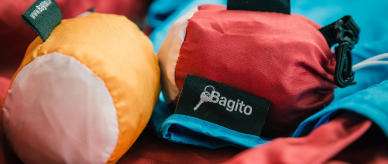While SHEIN’s 2023 Sustainability Report boasts of an on-demand fashion model aimed at reducing waste, the real story behind their operations reveals a darker environmental and ethical impact.
SHEIN has built a $66 billion empire by flooding the market with inexpensive, fast fashion. In the past year alone, the company has introduced approximately 1.3 million new styles. To put this in perspective, Gap released around 12,000 styles, H&M 25,000, and Zara 35,000. Despite SHEIN's claim that producing clothes in small batches reduces waste, global advocacy group Remake highlights that the enormous volume of production still results in hundreds of thousands of garments being churned out regularly, contributing to a significant environmental footprint.
One of the most pressing issues is SHEIN’s carbon footprint. The company’s reliance on air transport exacerbates their emissions, making their carbon impact approximately 40 times worse compared to ocean shipping. Last year, SHEIN’s emissions soared to 16.7 million tonnes of CO2 equivalent, surpassing Inditex, Zara’s parent company, and becoming the largest emitter among fashion giants. This figure represents nearly triple their emissions from
Credit: Fossil-Free Fashion Scorecard 2023
Despite SHEIN’s promise of a circular textile supply chain by 2050, the progress has been underwhelming. Emissions surged by over 80% from 2022 to 2023, far from their goal of a 30% reduction in six years. To achieve a significant impact, SHEIN would need to cut their emissions by over 60%, making their current targets seem unrealistic.
Ethical concerns are also prominent. Reports of child labor in SHEIN’s supply chain raise serious issues, compounded by the fact that microplastics from synthetic fabrics are now being detected in human organs, potentially causing health problems such as inflammation and cell damage. Additionally, SHEIN’s heavy reliance on Chinese suppliers, particularly from Xinjiang—a region notorious for forced labor involving the Uyghur population—further complicates their ethical standing. Xinjiang produces over 80% of China’s cotton, highlighting the need for transparency in SHEIN’s supply chain.
Ultimately, the challenge lies with us, the consumers. The allure of cheap, trendy clothes and influencer endorsements makes it tempting to overlook the hidden costs of fast fashion. However, making more informed choices and investing in well-made, eco-friendly clothing can drive significant change. Our purchasing decisions matter, and if we demand higher standards, companies will be compelled to respond.
If you want to learn about more brands, visit our verified sustainable marketplace to find ethical and sustainable alternative brands for women and men’s clothing, accessories, and shoes. We have thoroughly researched and rated more than 100 brands and selected for you only the best options based on the highest standards of transparency, fair labor, and sustainable making.













